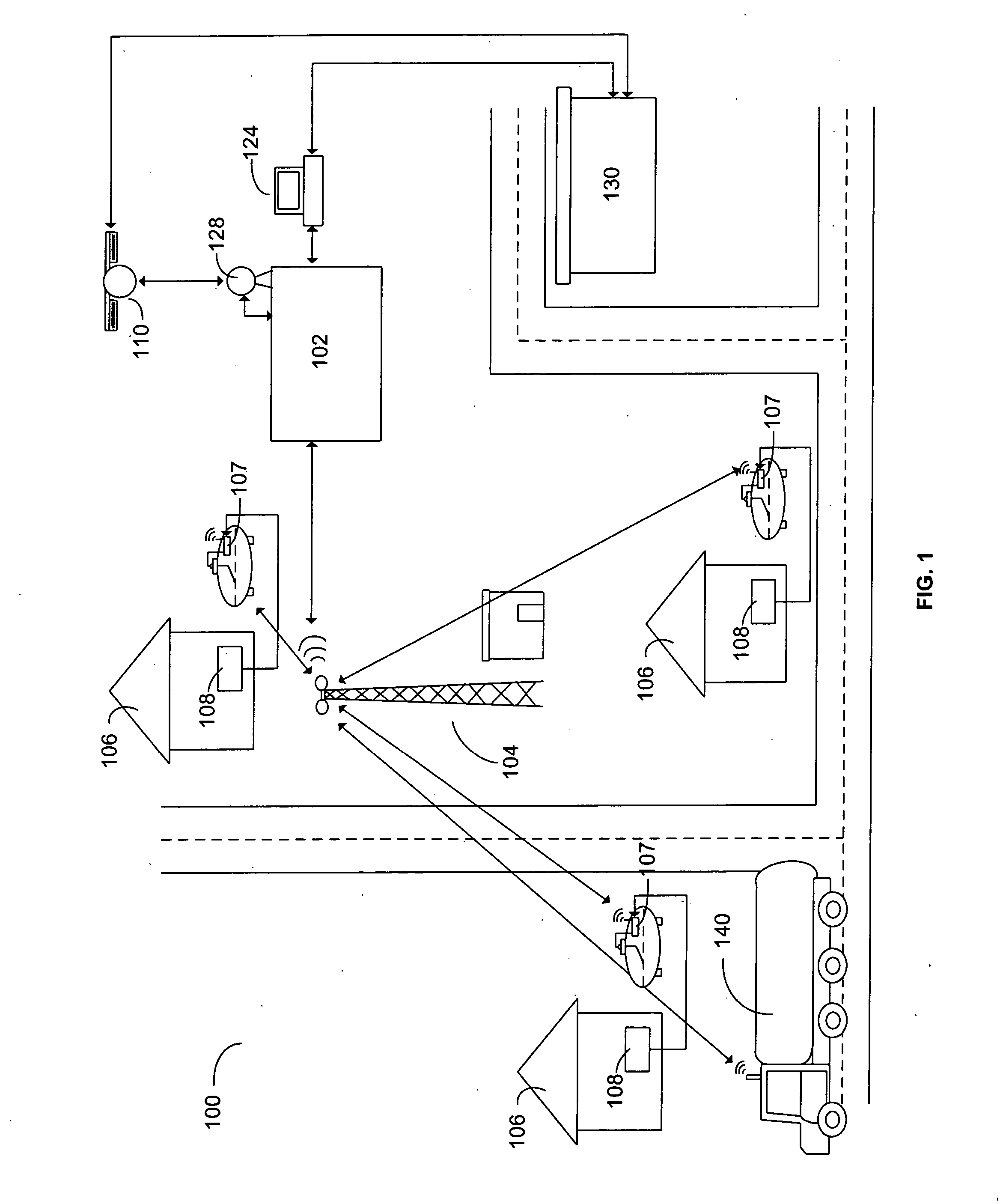System for monitoring propane or other consumable liquid in remotely located storage tanks
a technology for propane or other consumable liquids, which is applied in the direction of liquid handling, packaging goods types, transportation and packaging, etc., can solve the problems of high labor intensity, high labor intensity, and difficulty in maintaining the safety of customers, so as to improve safety and efficiently operate the propane dealership
- Summary
- Abstract
- Description
- Claims
- Application Information
AI Technical Summary
Benefits of technology
Problems solved by technology
Method used
Image
Examples
Embodiment Construction
[0036] A preferred embodiment of this invention provides a novel system and method for monitoring the levels of propane or other consumable liquid in remotely located storage tanks and an improved system to coordinating the delivery of a liquid to remotely located storage tanks.
[0037] Although much of the following description is directed toward propane storage and delivery, the present invention could be utilized with any type of consumable liquid commonly stored in liquid storage tanks, including natural gas or anhydrous ammonia. Hence, the scope of the present invention should not be limited to propane storage and delivery. Further, although much of this discussion is directed an economic model including a propane dealer servicing propane tanks located at customer sites, the system and methods discussed herein would be equally applicable to different economic models, including for example, a large corporation or other business entity servicing a large number of remote storage ta...
PUM
 Login to View More
Login to View More Abstract
Description
Claims
Application Information
 Login to View More
Login to View More - R&D
- Intellectual Property
- Life Sciences
- Materials
- Tech Scout
- Unparalleled Data Quality
- Higher Quality Content
- 60% Fewer Hallucinations
Browse by: Latest US Patents, China's latest patents, Technical Efficacy Thesaurus, Application Domain, Technology Topic, Popular Technical Reports.
© 2025 PatSnap. All rights reserved.Legal|Privacy policy|Modern Slavery Act Transparency Statement|Sitemap|About US| Contact US: help@patsnap.com



